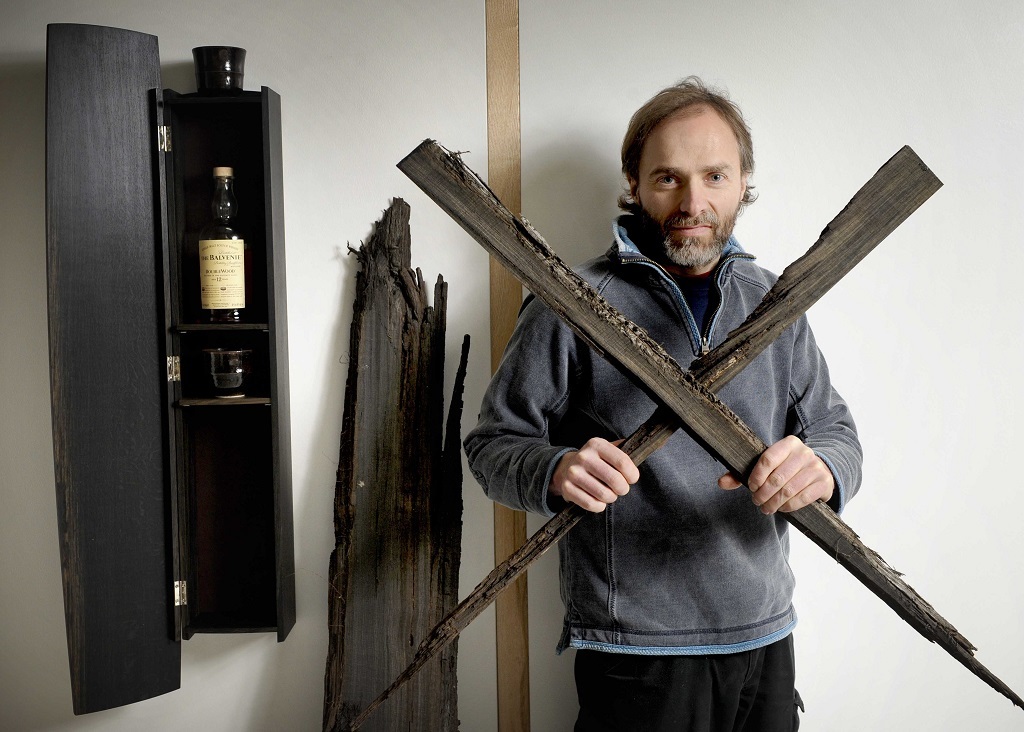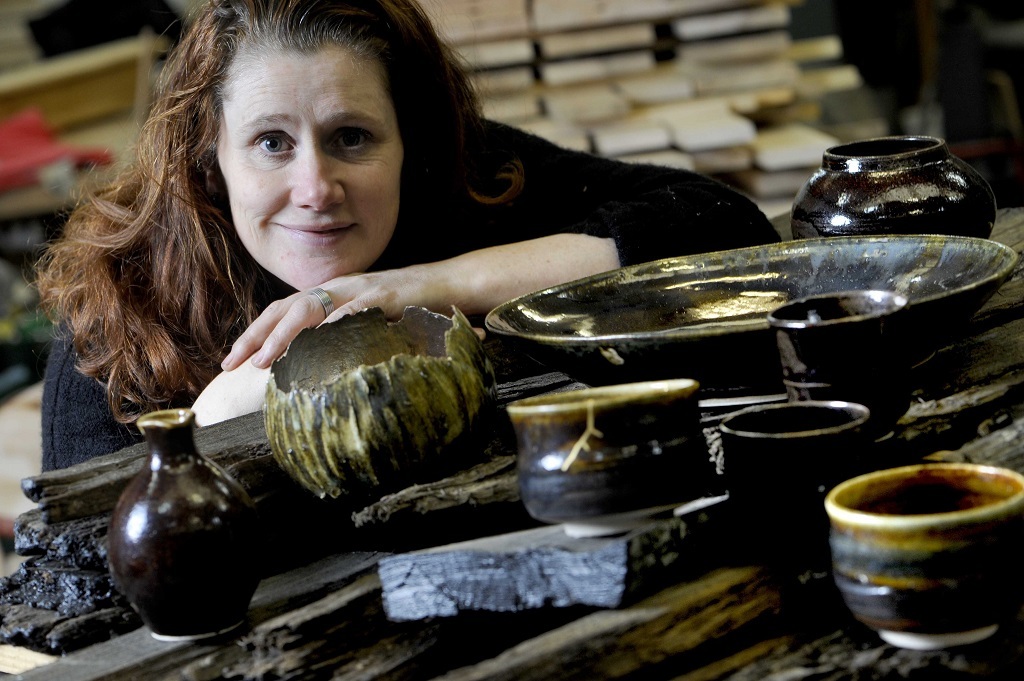Skilled craft makers are using a 7000-year-old oak in their amazing creations.
The craftspeople were thrilled by the opportunity to work with an ancient tree that fell victim to rising sea levels 7000 years ago.
Three craft makers are using the oak to create beautiful furniture and ceramics for this year’s Spring Fling open studios event.
The ancient tree grew beside the Solway Firth during the Mesolithic (or Middle Stone Age) at a time when the only humans in the area were hunter gatherers – centuries before the first settled farmers.
Daniel Lacey, a furniture maker from Dumfries and Galloway whose clients include Middle Eastern royalty, will display items made from the huge piece of bog oak at his studio in Langholm during Spring Fling from 26-28 May.

Daniel Lacey
These will be seen alongside gorgeous ceramics by Siobhan and Martin Miles-Moore, from Kirkby-Lonsdale in Cumbria, who have used burned sawdust from the oak to create unusual coloured glaze for their pottery.
Quality bog oak is much sought after by furniture makers and to recover a log this old, and so far north in mainland Britain, is highly unusual – all the more so because it is 7m long and nearly a metre wide.
Daniel said: ‘It’s remarkable to work with wood like this because the tannin present in oak reacts with the minerals it has absorbed over the millennia to give it an astonishing nearly-black colour and a very unusual lustre. The colours are very subtle – something that people who love wood really watch out for.
‘It’s also quite something to think that this tree, which grew by the Solway Firth all that time ago, has been rediscovered and can be used to create furniture designed to make the most of its special character.’
The tree was recovered from beneath a 7,000-year-old layer of peat by a farmer on the Cumbrian side of the firth during drainage work last year and Daniel has been carefully drying it out, ready to be worked, ever since.
Daniel’s wood has a high iron content, helping make it very hard, and adding to the distinctive orange and black colouring that it has given to the pottery when Miles-Moore Ceramics began to experiment with using it for a glaze.

Siobhan Miles-Moore
Siobhan said: ‘We hadn’t heard of anyone using bog oak for wood ash glaze before, and we try to use Cumbrian materials in our work, so it was very exciting when Daniel told us about this discovery.
‘We have been experimenting with using wood ash from some of the sawdust and offcuts and the results have been very special indeed. The high iron and mineral content means it creates some very exciting strong colours.
‘And I think people will be fascinated by the idea of having ceramics or furniture created using a tree that grew here in the Stone Age.’
The Miles-Moores will be sharing Daniel’s studio during Spring Fling, which is Scotland’s premier open studios event.
Joanna Macaulay, events and exhibitions manager for Upland which runs Spring Fling, said: ‘Visitors love Spring Fling because they get the chance to meet people like Daniel and the Miles-Moores and find out the extraordinary stories behind what they make.’
The 16th annual event takes place across Dumfries and Galloway from 26 to 28 May and will include 86 specially selected artists and makers.
Visitors will be able to see jewellery, ceramics, sculpture, paintings, photography, original prints, metalwork, glass, textiles, furniture and more.
For full details of all those taking part in Spring Fling click HERE.
Mainland bog oak finds of sufficient size and quality to be used in furniture are rare, especially in this part of the country rather than East Anglia.
In this case the tree is likely to have been a victim of rising water levels when glaciers in northern Europe were melting after the end of the last Ice Age. After falling it was trapped in cold, dark, wet, mineral rich and airless conditions that combined to stop it rotting.
TAGS

